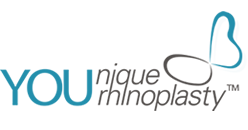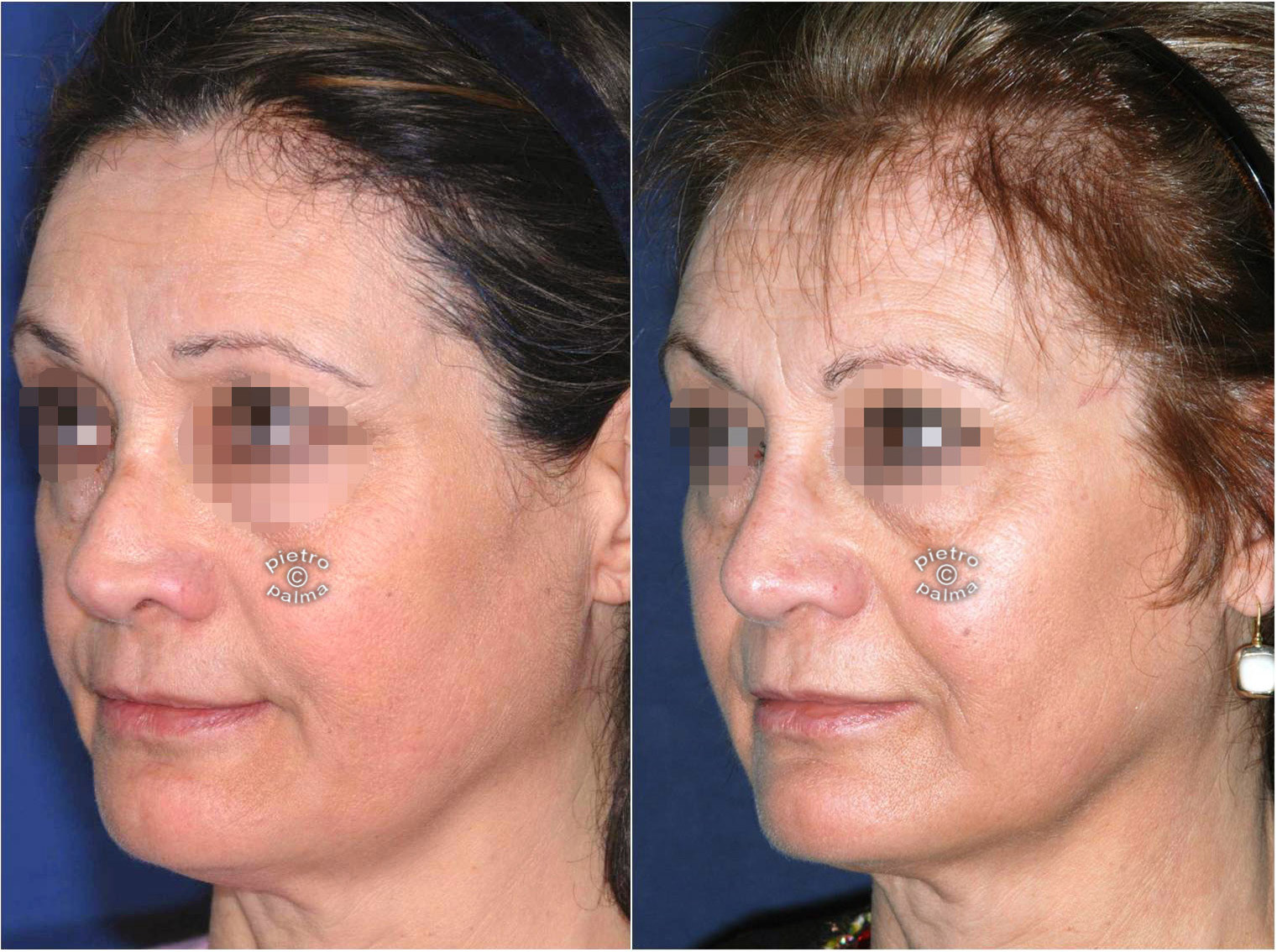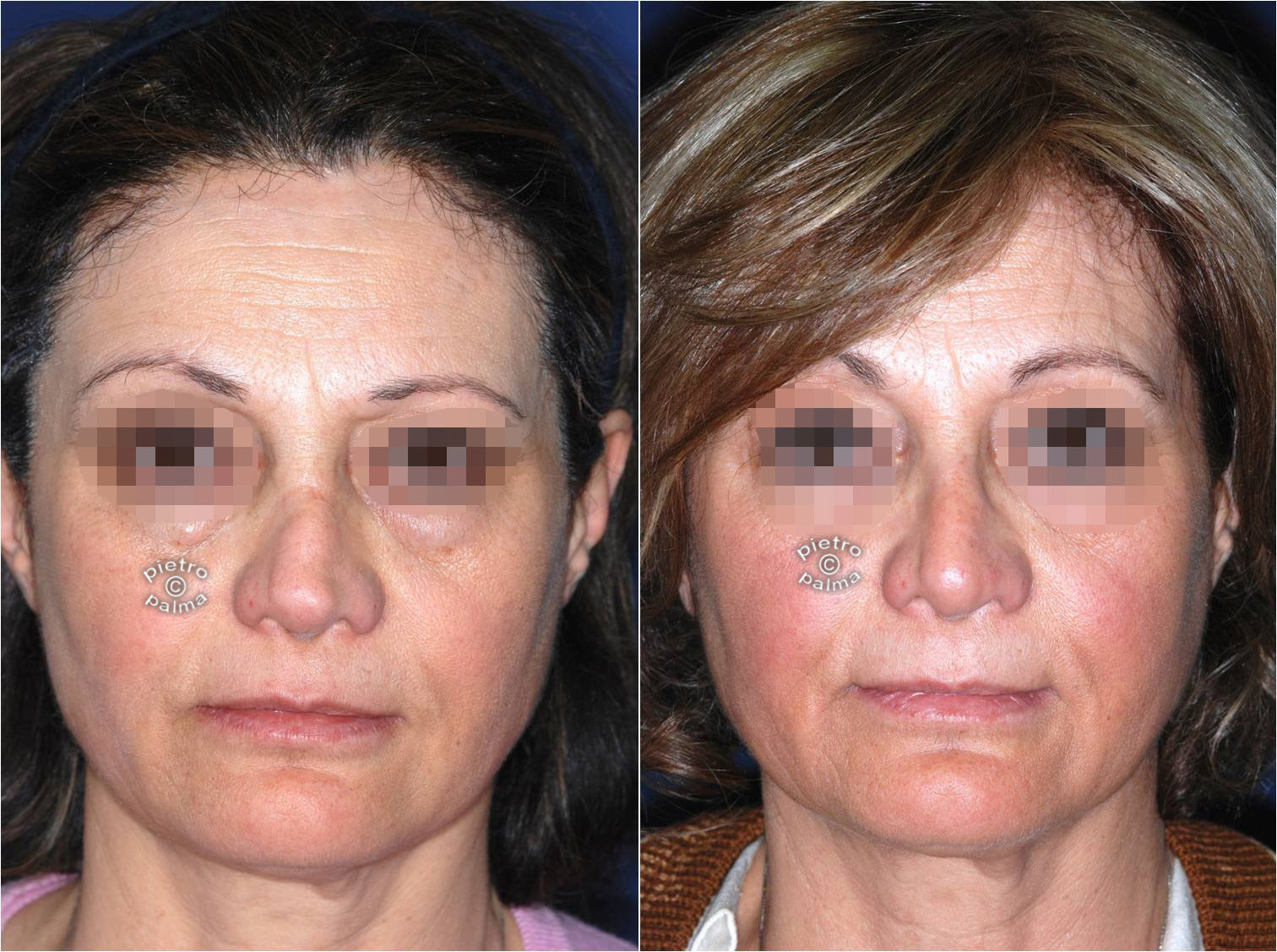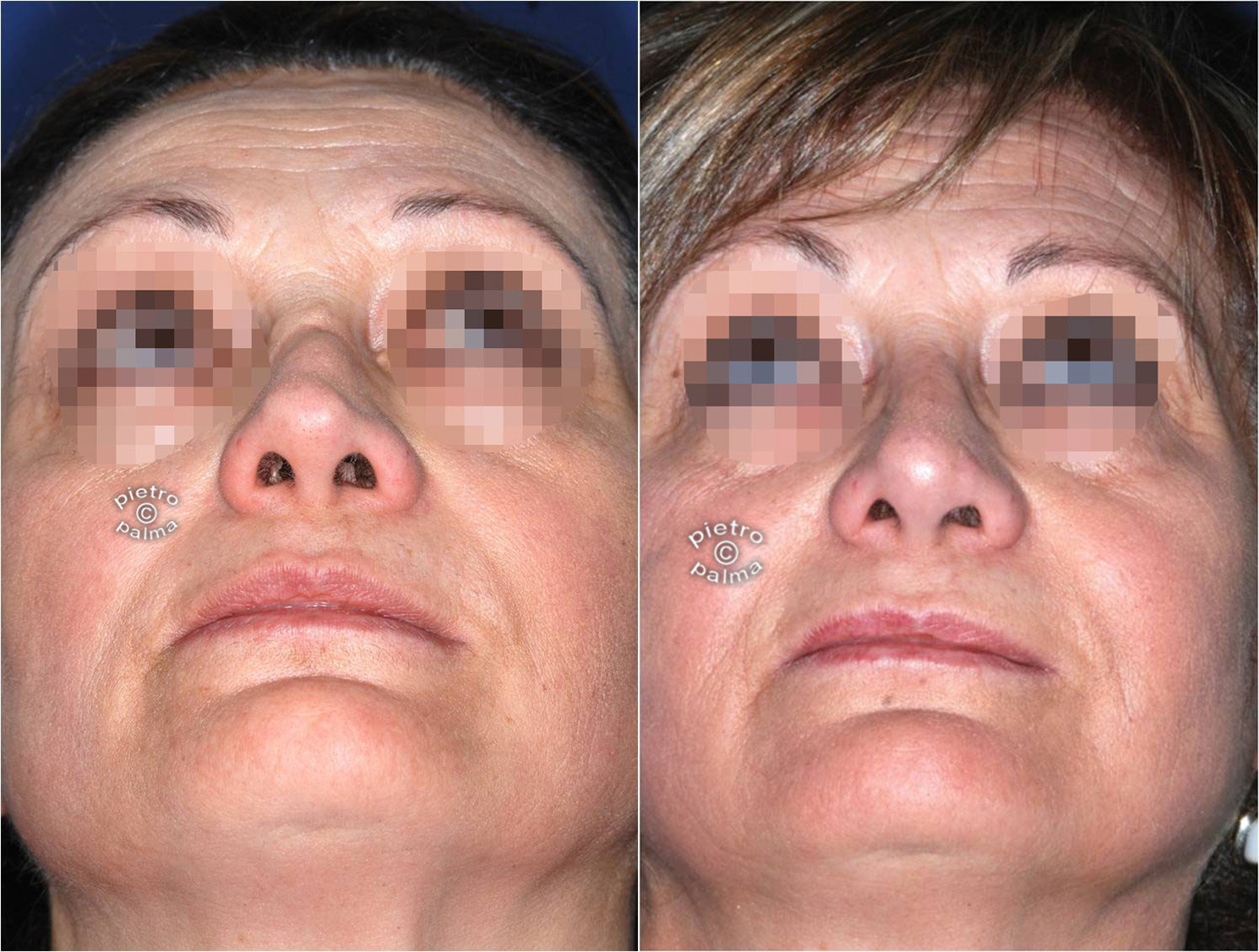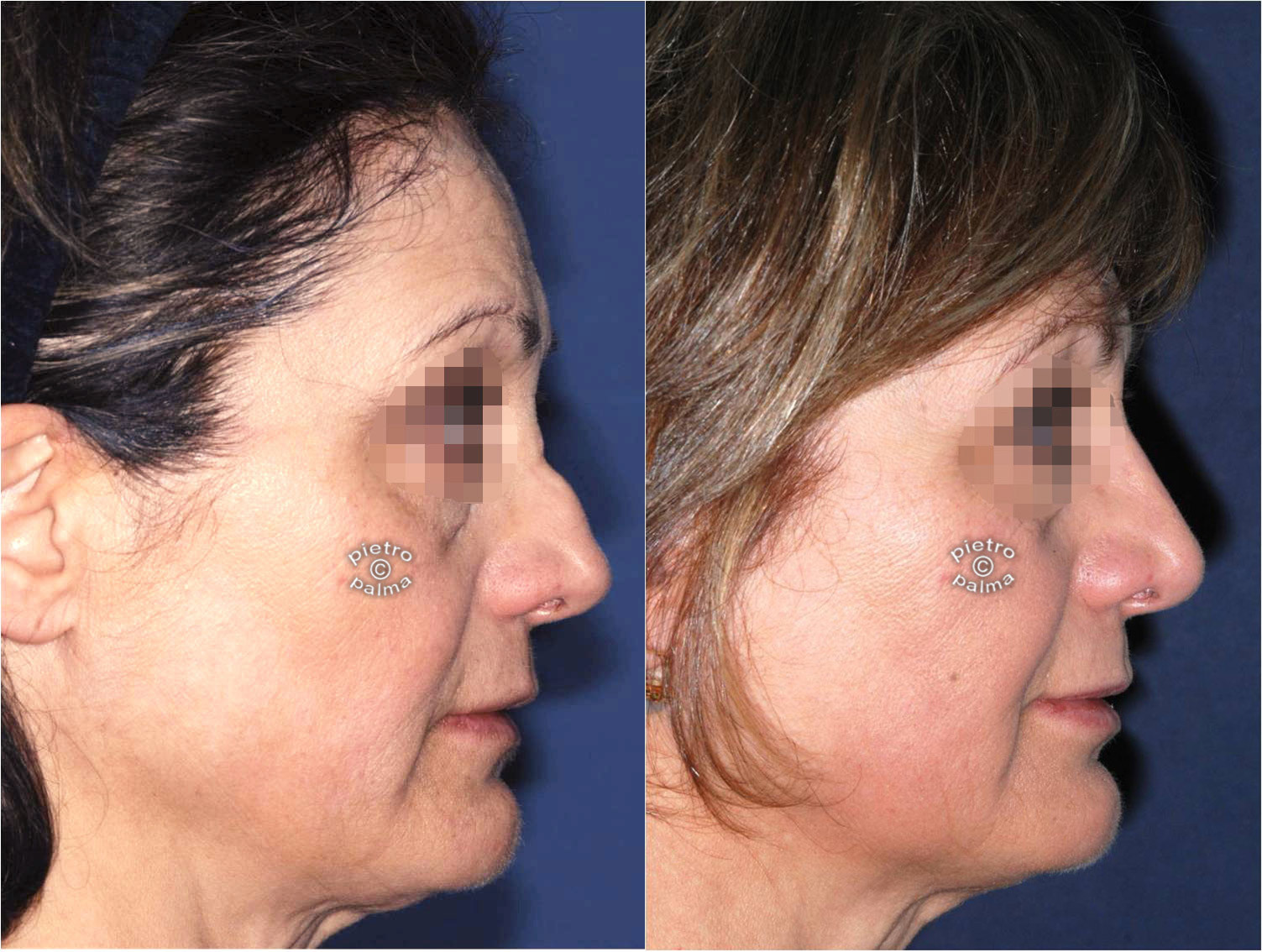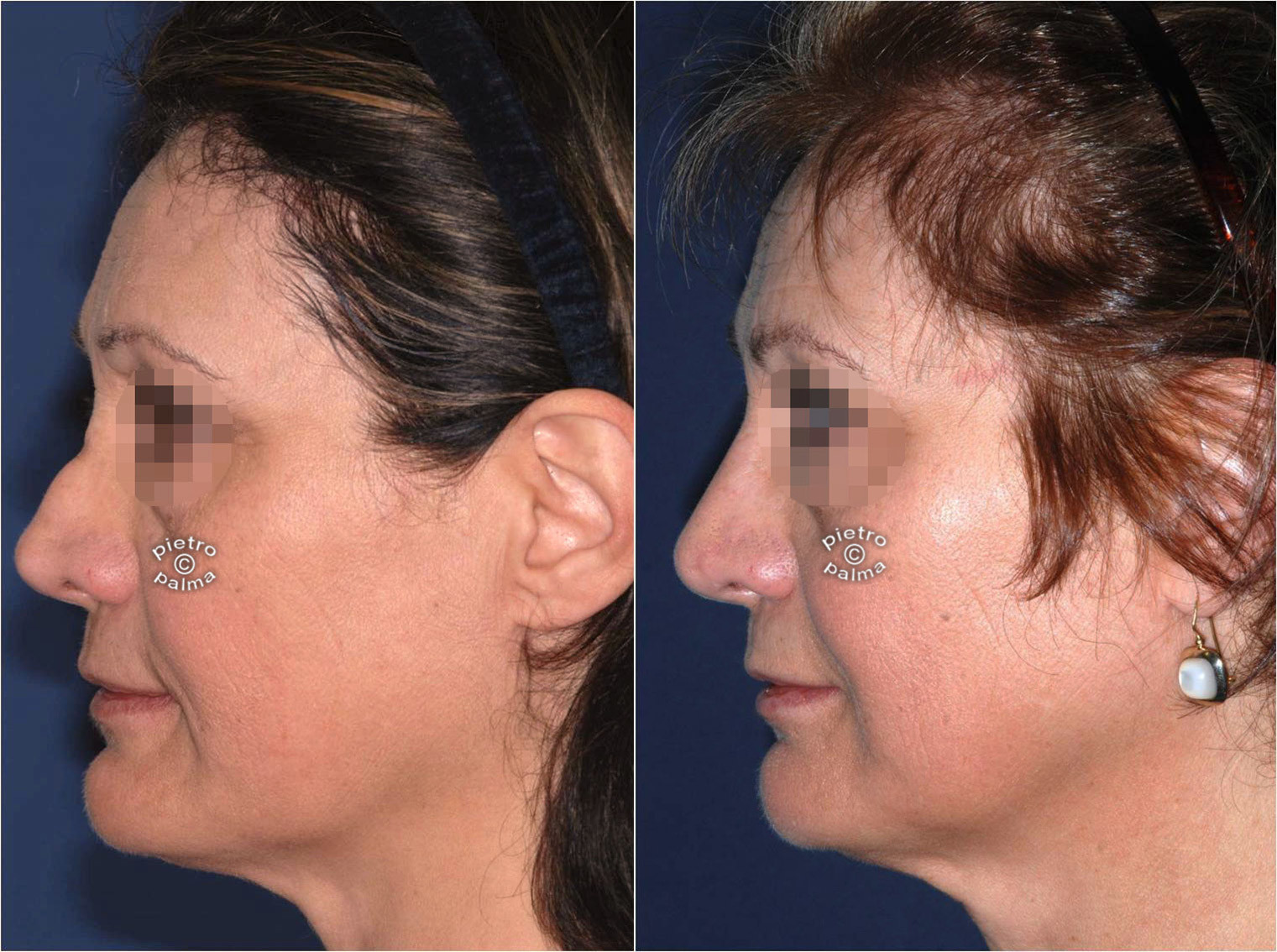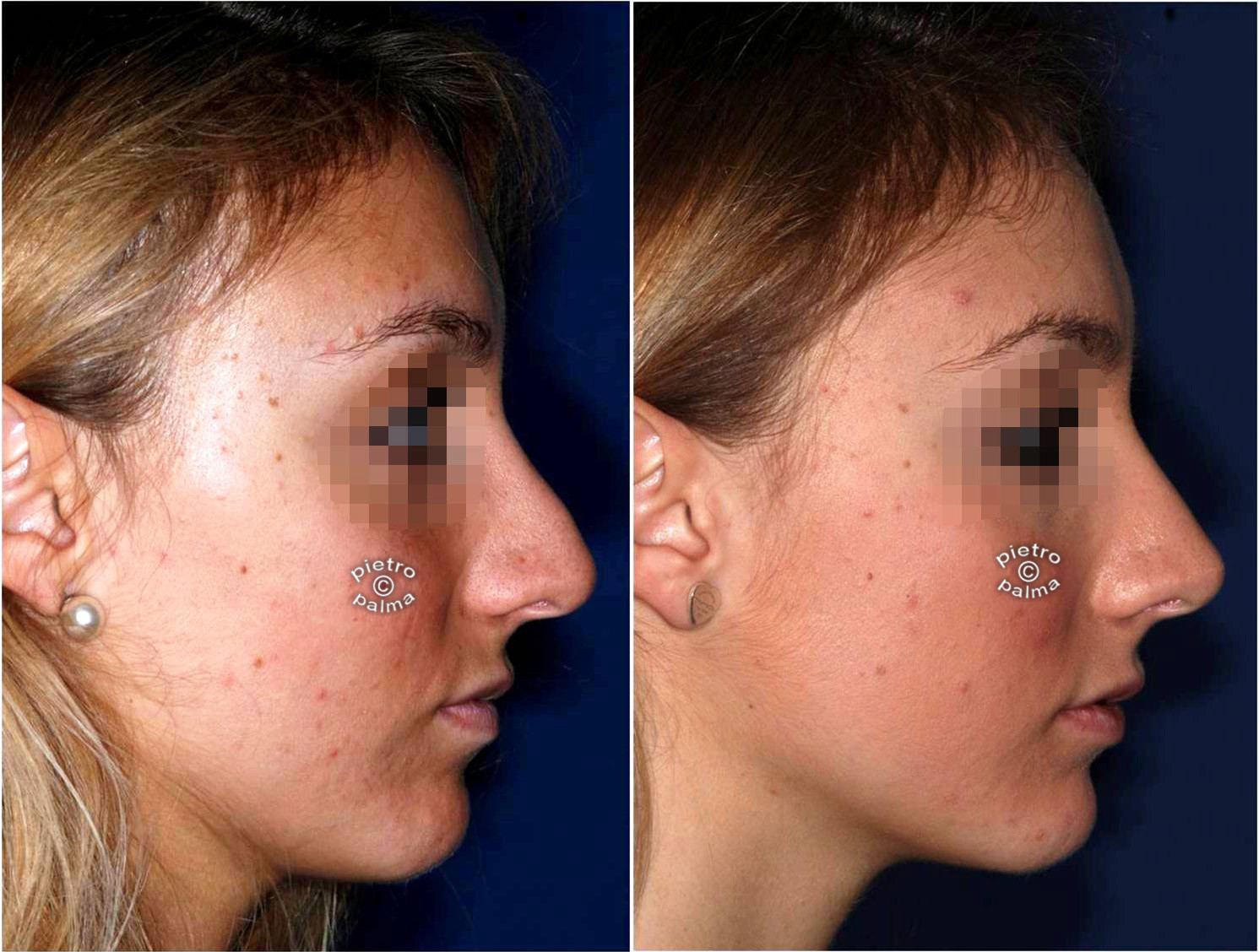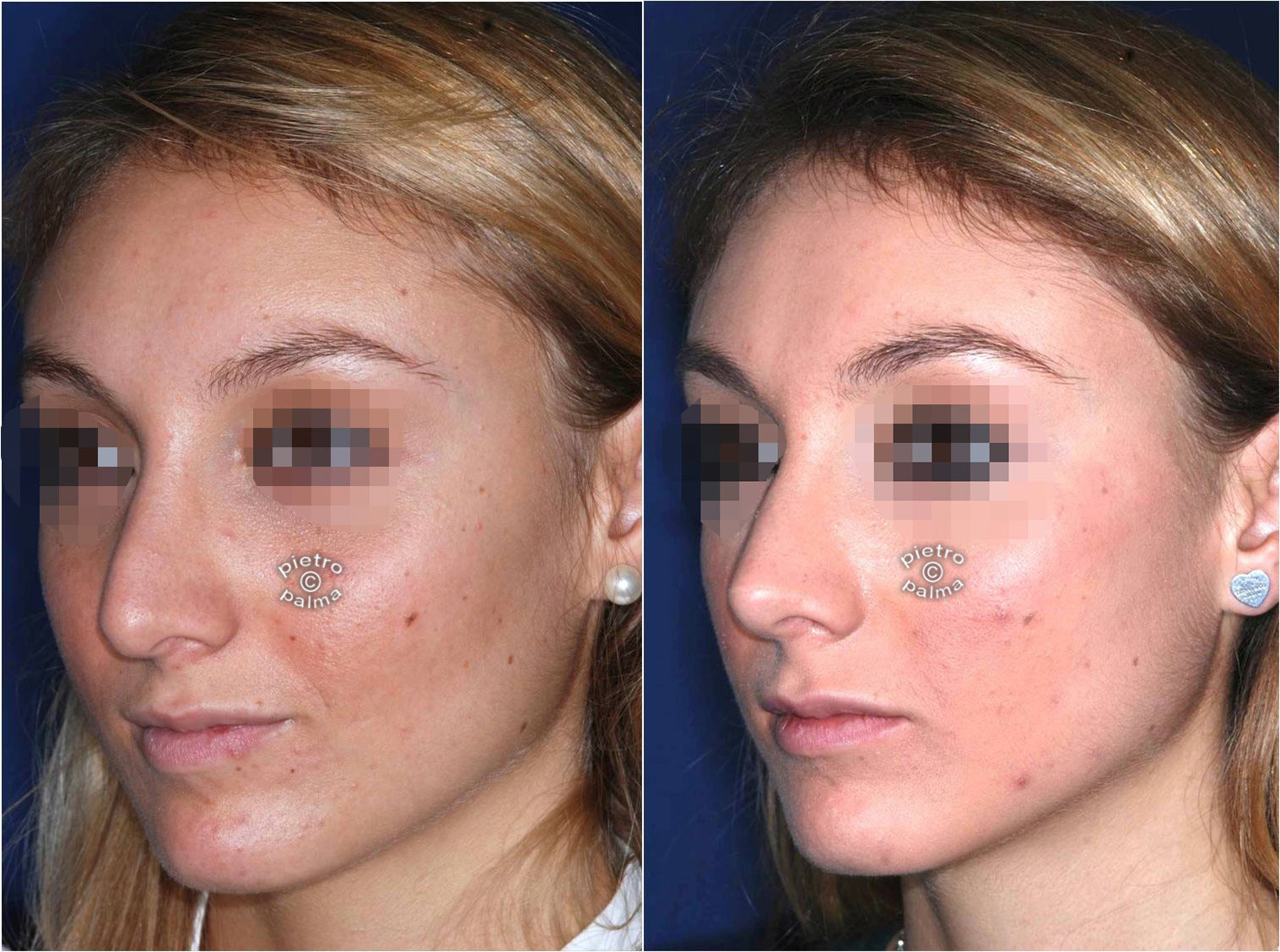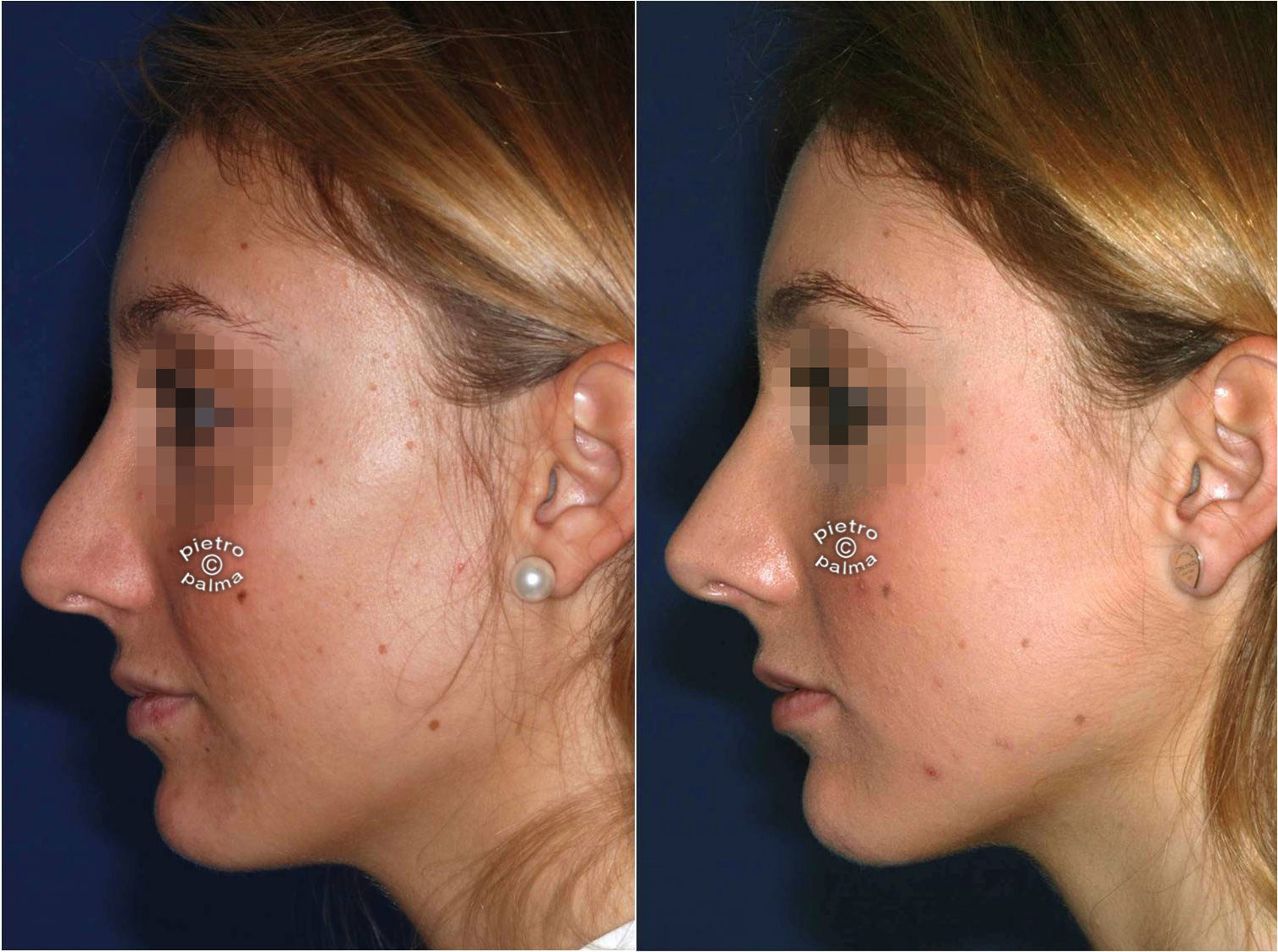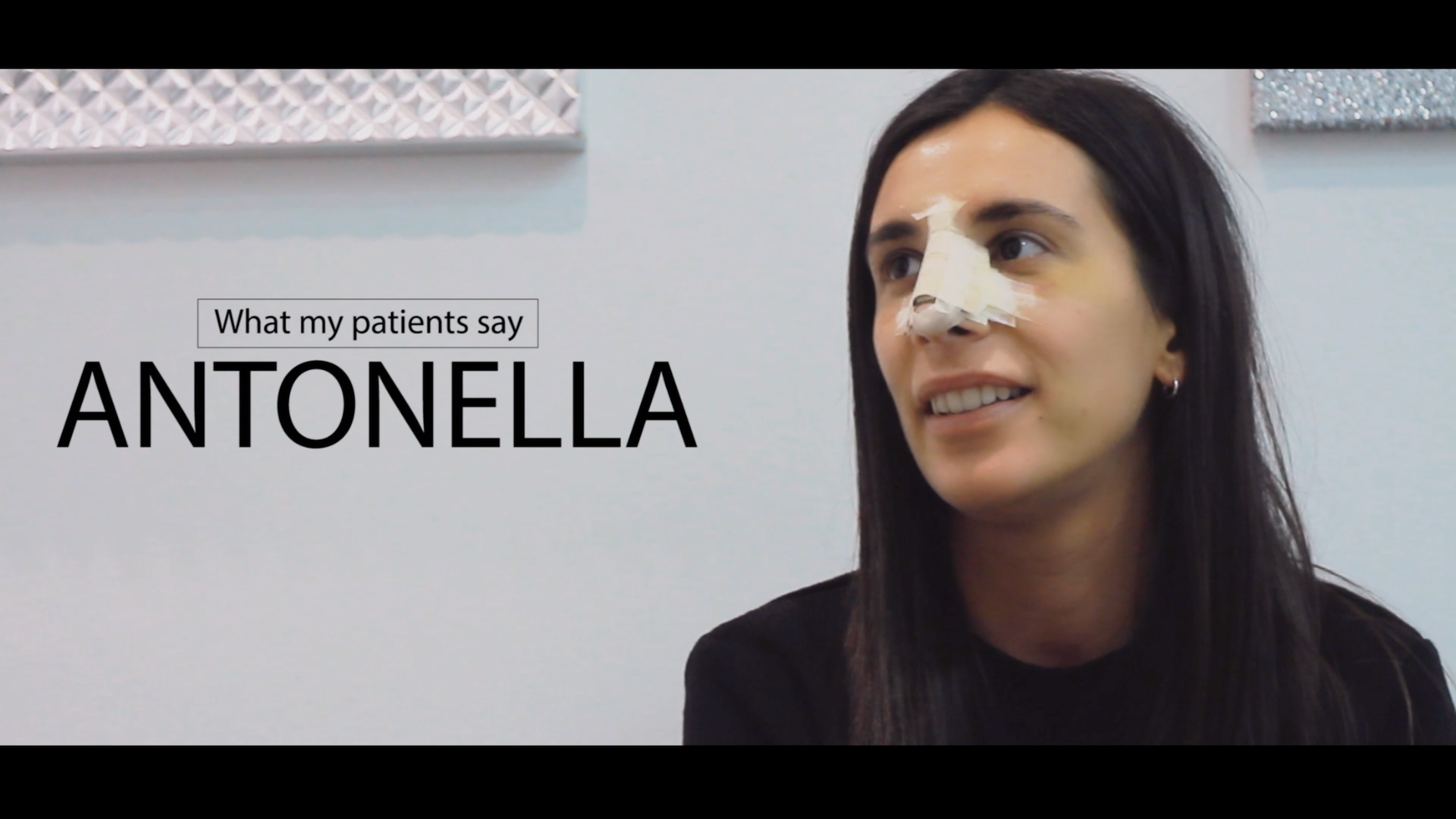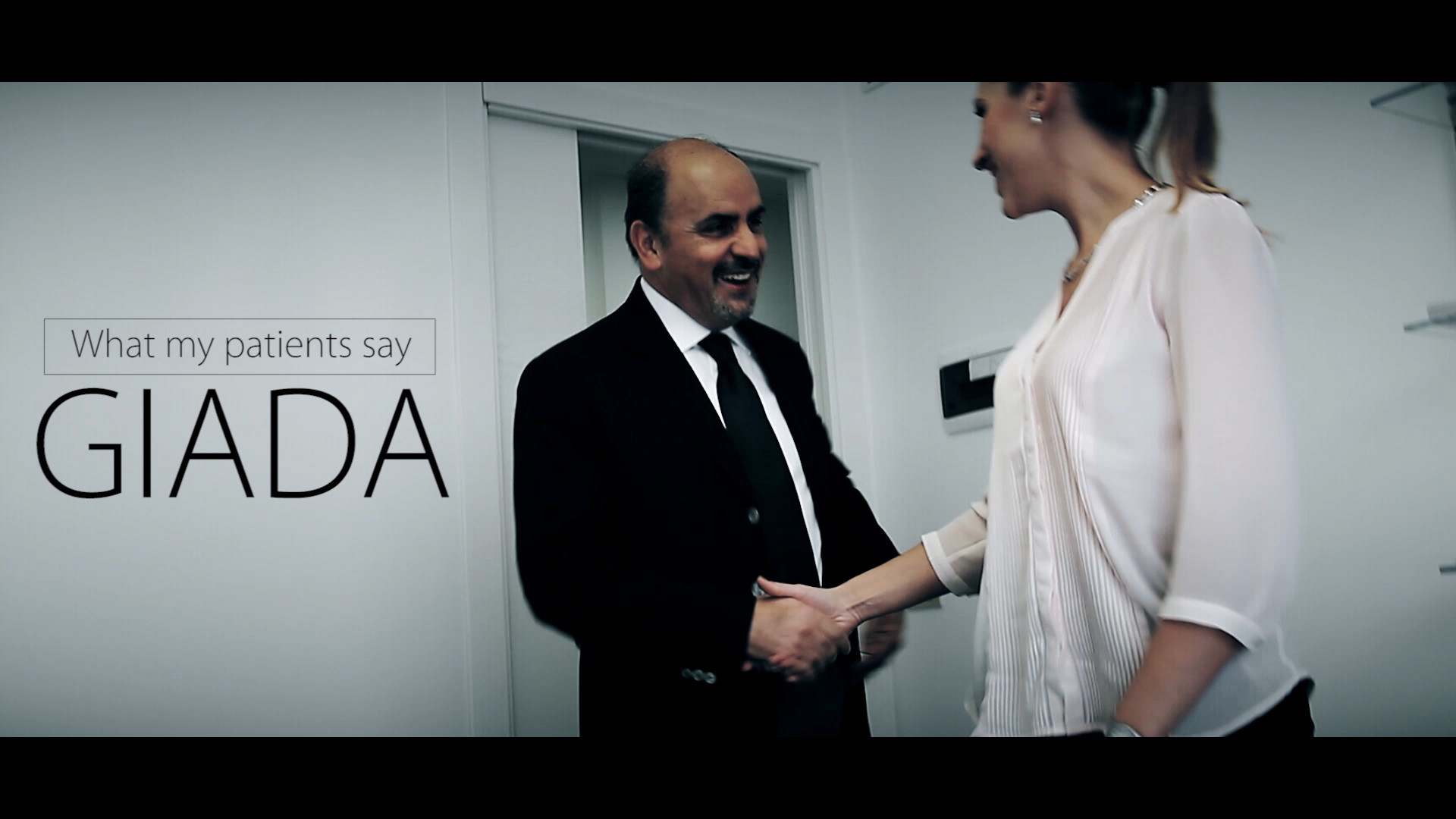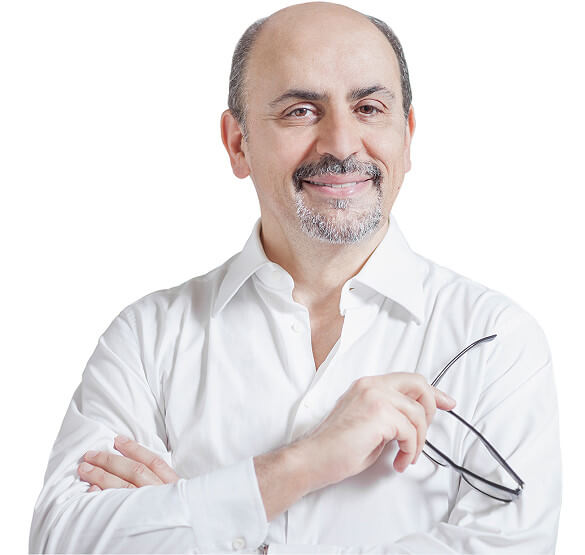What defects can we correct with a second nose job
The patient may be disappointed with the aesthetic or functional outcomes of his/her nose job. Surgical revision allows us to fix various problems: let’s see them briefly.
Post-surgical deviated septum
Nasal septal deviations have several causes attributable to cartilage or bone. First, we must ascertain the origin of the defect: was it pre-existing and not properly addressed? Or was it caused by surgery? Before operating, we must perform a careful diagnosis with a thorough radiographic investigation.
Revision of post-surgical deformity of the dorsum
Inverted V deformity is an alteration in the width of the nasal dorsum due to excessive or reckless removal of the triangular cartilages in the first operation. In these cases, it is common to resort to cartilage grafts taken from the ear with the spreader graft technique.
Nasal tip improvements
To give support and projection to a collapsed nasal tip, we can use a columellar strut. We take a small portion of cartilage from the septum and insert it at the level of the columella. To correct an irregular, bulbous or globose nasal tip, we can perform sutures between the cartilages.
Nose job revision under local anesthesia
Before and after the second rhinoplasty, we can see many differences, not always pleasant. Sometimes, minimally invasive procedures may suffice to resolve post-surgical dissatisfaction. We try to spare the patient from anesthesia and post-operative night hospitalization whenever possible.
Today, we have more precise and less invasive surgical techniques that allow us, in some cases, to operate under local anesthesia with conscious sedation. Such is the case, for example, of minimal irregularities of the nasal dorsum or tip. Secondary nose jobs under local anesthesia have several advantages:
- they do not need intubation;
- do not involve the use of tampons;
- they do not cause bleeding;
- provide for same-day discharges, according to the modalities of the outpatient day hospital;
- require shorter recovery times, causing reduced discomfort.
However, the extent and type of defect are not always compatible with day-hospital treatment. Sometimes, only actual surgery allows us to address the critical issues detected. For a professional evaluation of your post-surgical defects, contact us and make an appointment with the best secondary/tertiary rhinoplasty surgeon in Milan.
Your surgeon for the secondary rhinoplasty in Milan
Contact us for a preliminary consultation concerning a secondary rhinoseptoplasty in Milan. Keep in mind that revisions are always more complex than primary rhinoplasties, especially when the septal cartilage is absent/insufficient. Removing disproportionate amounts of cartilage in the first surgery can cause a lack of structural support in the dorsum or tip. Consequently, the maneuvers of the second nose job require even more skill, precision, and competence.
As we have seen, in simple cases, we can retouch the tip or the dorsum under local anesthesia. In more complex cases, however, a proper secondary surgery is required. While it would be unreasonable to underestimate the challenge of primary rhinoplasty, a second or third surgery requires even more maturity, experience, and skills. The best secondary rhinoseptoplasty surgeon knows how to deal with high technical complexity and long working times. The surgical revision expert is ready to face unexpected events and side effects in cartilage harvesting areas.
Contact us if you want more information on secondary rhinoplasty: you can arrange a preliminary interview with the best secondary rhinoplasty surgeon in Milan.
